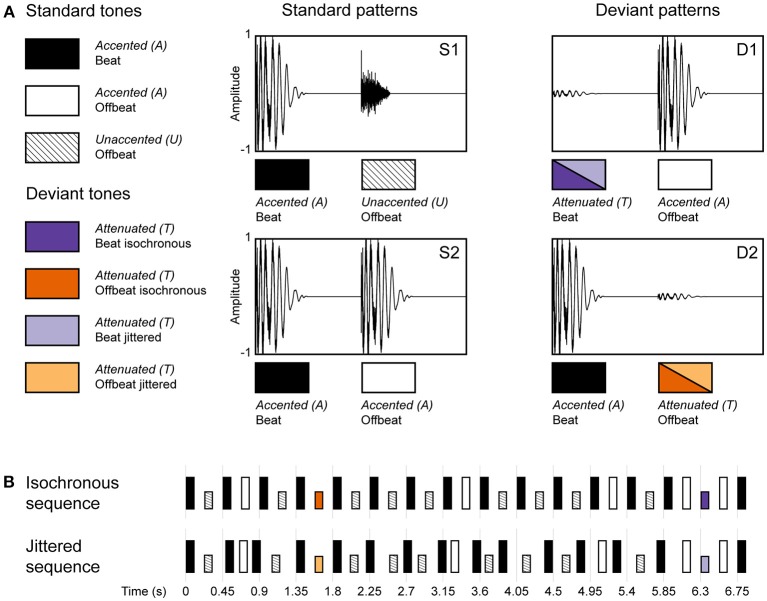Figure 2.
Schematic diagram of the rhythmic stimulus patterns used in the experiment. (A) The two standard (S1 and S2) and two deviant patterns (D1 and D2), made up of three different sounds (A, accented; U, unaccented; and T, attenuated). An accented sound could occur either on the beat or offbeat, an unaccented sound was restricted to the offbeat position. An attenuated sound was used as a deviant in two positions (beat and offbeat) and in two conditions (isochronous and jittered). (B) Standard and deviant sound patterns were concatenated into a single rhythmic stream (their generation is visualized as a transition network in Figure 3). Sequences in the isochronous condition had an inter-onset interval (IOI) of 225 ms, in the jittered condition these were randomly chosen from the range 150–300 ms using a uniform distribution. Deviants were always preceded and followed by an accented sound, with a fixed IOI of 225 ms in both conditions (Adapted from Bouwer et al., 2016).

